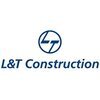Filter interviews by
Nagarjuna Construction Company Junior Civil Execution Engineer Interview Questions and Answers
Nagarjuna Construction Company Junior Civil Execution Engineer Interview Experiences
1 interview found
I applied via Company Website

(2 Questions)
- Q1. How many bricks in one cum
- Ans.
The number of bricks in one cubic meter (cum) varies depending on the size of the bricks.
The size of the bricks affects the number of bricks in one cubic meter.
Standard size bricks are typically 190mm x 90mm x 90mm.
Assuming standard size bricks, approximately 500 bricks are required to make one cubic meter.
However, the number can vary if the brick size is different.
- Q2. Density of cement In one cum
- Ans.
The density of cement in one cubic meter (cum) varies depending on the type of cement used.
The density of ordinary Portland cement is typically around 1440 kg/m³.
Different types of cement, such as Portland Pozzolana Cement (PPC) or Portland Slag Cement (PSC), may have different densities.
To calculate the density of cement in one cubic meter, divide the mass of cement by the volume it occupies.
Interview Preparation Tips
Interview questions from similar companies

Senior Engineer Interview Questions & Answers
Larsen & Toubro Limitedposted on 18 Nov 2020
Interview Questionnaire
3 Questions
- Q1. What is android architecture stack?
- Ans.
Android architecture stack is a set of layers that make up the Android operating system.
The stack includes four main layers: Linux kernel, native libraries, Android runtime, and application framework.
The Linux kernel provides low-level system functionality.
Native libraries are written in C or C++ and provide access to hardware-specific features.
The Android runtime includes the Dalvik virtual machine and core libraries.
...
- Q2. What is AIDL?
- Ans.
AIDL stands for Android Interface Definition Language, used for inter-process communication in Android.
AIDL is used to define the interface between client and service in Android.
It allows communication between different processes in Android.
AIDL is used to pass complex data types between processes.
AIDL is similar to Remote Procedure Call (RPC) in other programming languages.
Example: AIDL is used in Android to implement...
- Q3. What is hash set and hash map
- Ans.
Hash set and hash map are data structures used to store key-value pairs for efficient retrieval.
Hash set stores unique values without any specific order.
Hash map stores key-value pairs and allows fast retrieval of values based on keys.
Both use hashing to map keys to their corresponding values.
In Java, HashSet and HashMap are implementations of these data structures.
Skills evaluated in this interview

Senior Engineer Interview Questions & Answers
Larsen & Toubro Limitedposted on 14 Jul 2021
Interview Questionnaire
1 Question
- Q1. What is your role in previous company

I applied via Company Website and was interviewed before Apr 2020. There were 4 interview rounds.
Interview Questionnaire
2 Questions
- Q1. Load distribution under rigid and flexible footings,water tank design, steel foundation design
- Q2. Mix design of concrete, btech project
- Ans.
Mix design of concrete and BTech project
Mix design involves determining the proportions of cement, water, aggregates, and admixtures to achieve desired properties of concrete
Factors like strength, workability, durability, and cost are considered while designing the mix
BTech project can involve studying the effect of different mix designs on properties of concrete or developing a new mix design
Examples of BTech projects...
Interview Preparation Tips

Interview Questionnaire
3 Questions
- Q1. How many time u take any update shuttering system?
- Ans.
The question is unclear and lacks context.
Please provide more information about the 'update shuttering system'.
Specify the time frame for the updates.
Clarify the purpose or objective of the updates.
Provide any relevant examples or scenarios.
- Q2. Why u want to work as a execution engineer? Why not any special team such as formwork team,or quality team?
- Ans.
I want to work as an execution engineer because I enjoy the challenge of overseeing and coordinating all aspects of a project.
As an execution engineer, I would have the opportunity to work on a variety of projects and oversee all aspects of their execution.
I enjoy the challenge of coordinating different teams and ensuring that everything runs smoothly.
While working on a formwork or quality team would be valuable experi...
- Q3. As contractor farm Engineer in RCC which is most important? 1) Reinforcements 2)Formwork 3)Concrete And why?
- Ans.
Concrete is the most important as it provides the strength and durability to the structure.
Concrete is the backbone of any RCC structure.
It provides the strength and durability to the structure.
Reinforcements and formwork are important too, but without concrete, they are useless.
Proper mix design and curing of concrete are crucial for the longevity of the structure.

I applied via Naukri.com and was interviewed in May 2021. There were 3 interview rounds.
Interview Questionnaire
1 Question
- Q1. Related to girder,segment,pier,pier table
Interview Preparation Tips

Senior Engineer Interview Questions & Answers
Larsen & Toubro Limitedposted on 11 Jun 2022
I applied via Campus Placement and was interviewed before Jun 2021. There were 3 interview rounds.
Mathematics, English, Reasoning
(2 Questions)
- Q1. They asked Technical questions
- Q2. What is antenna What is satcom
- Ans.
An antenna is a device that converts electrical signals into electromagnetic waves and vice versa. Satcom is short for satellite communication.
Antennas are used for transmitting and receiving signals in various applications such as radio, television, and wireless communication.
Satcom refers to the use of satellites for communication purposes, including television broadcasting, internet access, and military communicatio...
Clean India
Corruption
Interview Preparation Tips

Senior Engineer Interview Questions & Answers
Larsen & Toubro Limitedposted on 4 Nov 2021
I applied via Naukri.com and was interviewed in May 2021. There were 3 interview rounds.
Interview Questionnaire
1 Question
- Q1. Major questions on my past work responsibilities and projects, stlc, defect life cycle, tools used, test case writing, techniques, test plan, agile methodologies
Interview Preparation Tips
Got interview through recruitment consultancy from naukri

I applied via Recruitment Consultant and was interviewed in Feb 2021. There were 3 interview rounds.
Interview Questionnaire
1 Question
- Q1. About my experience and what kind of job i can handle etc
Interview Preparation Tips

I applied via Job Portal and was interviewed in Oct 2020. There was 1 interview round.
Interview Preparation Tips
Nagarjuna Construction Company Interview FAQs
Tell us how to improve this page.
Nagarjuna Construction Company Interviews By Designations
- Nagarjuna Construction Company Junior Engineer Interview Questions
- Nagarjuna Construction Company Senior Engineer Interview Questions
- Nagarjuna Construction Company Civil Engineer Interview Questions
- Nagarjuna Construction Company Assistant Engineer Interview Questions
- Nagarjuna Construction Company Assistant Engineer - Civil Interview Questions
- Nagarjuna Construction Company Junior Engineer Civil Interview Questions
- Nagarjuna Construction Company Civil Site Engineer Interview Questions
- Nagarjuna Construction Company Graduate Engineer Trainee (Get) Interview Questions
- Show more
Interview Questions for Popular Designations
- Civil Execution Engineer Interview Questions
- Civil Site Engineer Interview Questions
- Civil Engineer Interview Questions
- Junior Engineer Civil Interview Questions
- Senior Civil Engineer Interview Questions
- Civil Site Execution Engineer Interview Questions
- Civil Foreman Interview Questions
- Civil Supervisor Interview Questions
- Show more
Interview Questions from Similar Companies
Fast track your campus placements
|
Junior Engineer
908
salaries
| ₹1.8 L/yr - ₹6 L/yr |
|
Assistant Engineer
638
salaries
| ₹2.4 L/yr - ₹9 L/yr |
|
Senior Engineer
396
salaries
| ₹4.3 L/yr - ₹11 L/yr |
|
Junior Engineer Civil
367
salaries
| ₹2 L/yr - ₹6.5 L/yr |
|
Assistant Engineer - Civil
292
salaries
| ₹3.3 L/yr - ₹8.9 L/yr |

Larsen & Toubro Limited

L&T Construction

Tata Projects

Kalpataru Projects International
- Home >
- Interviews >
- Nagarjuna Construction Company Interview Questions >
- Nagarjuna Construction Company Junior Civil Execution Engineer Interview Questions















